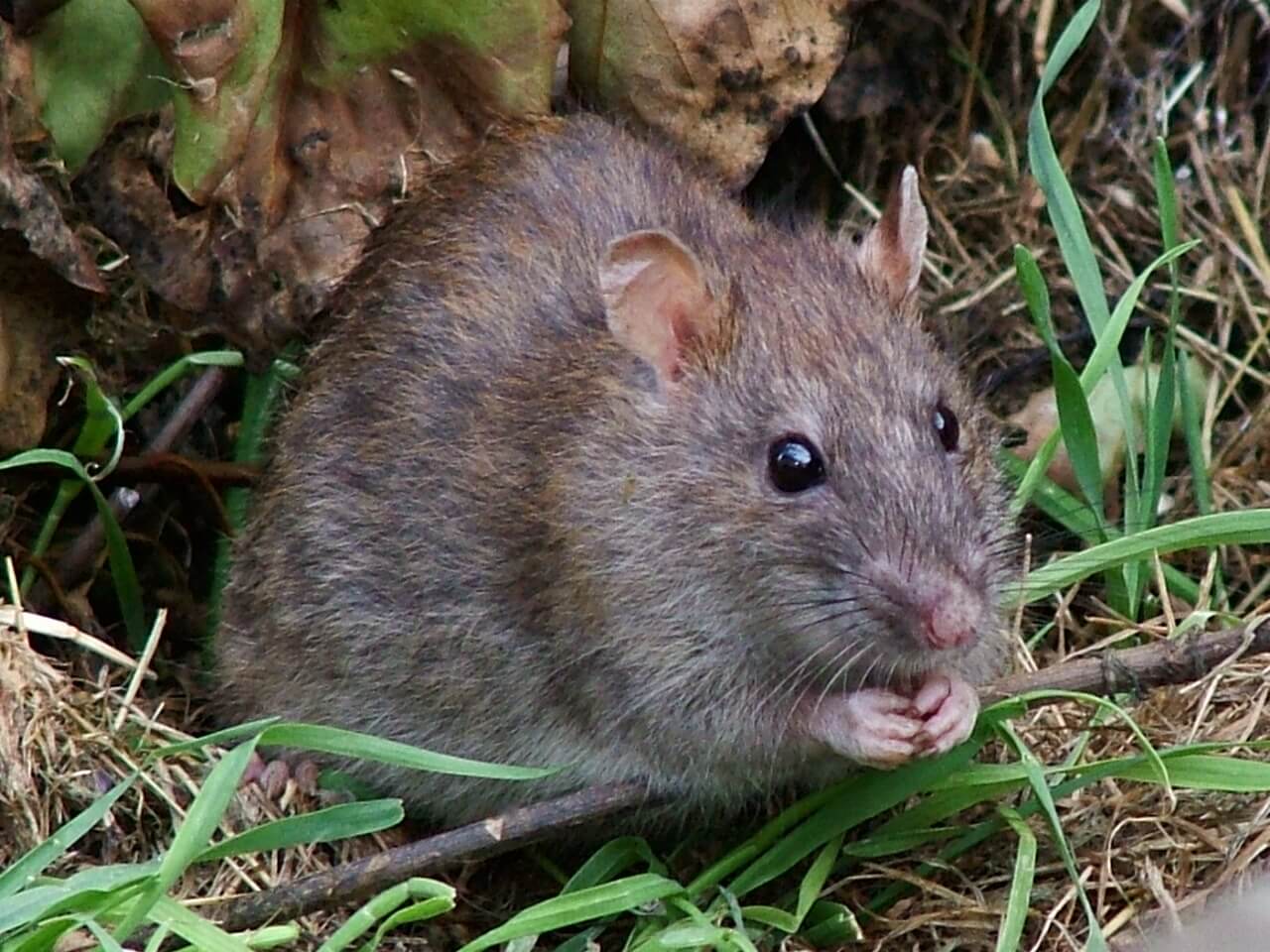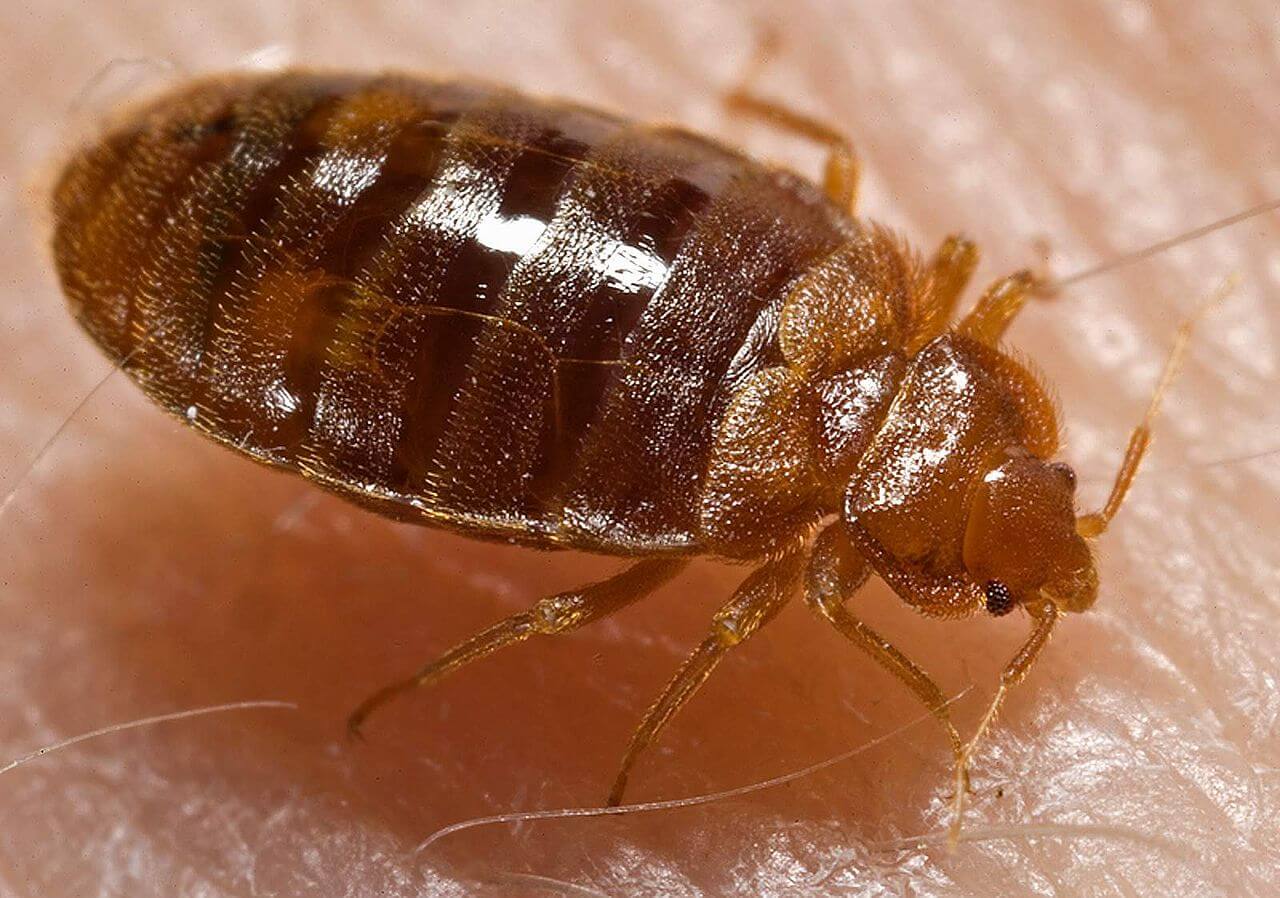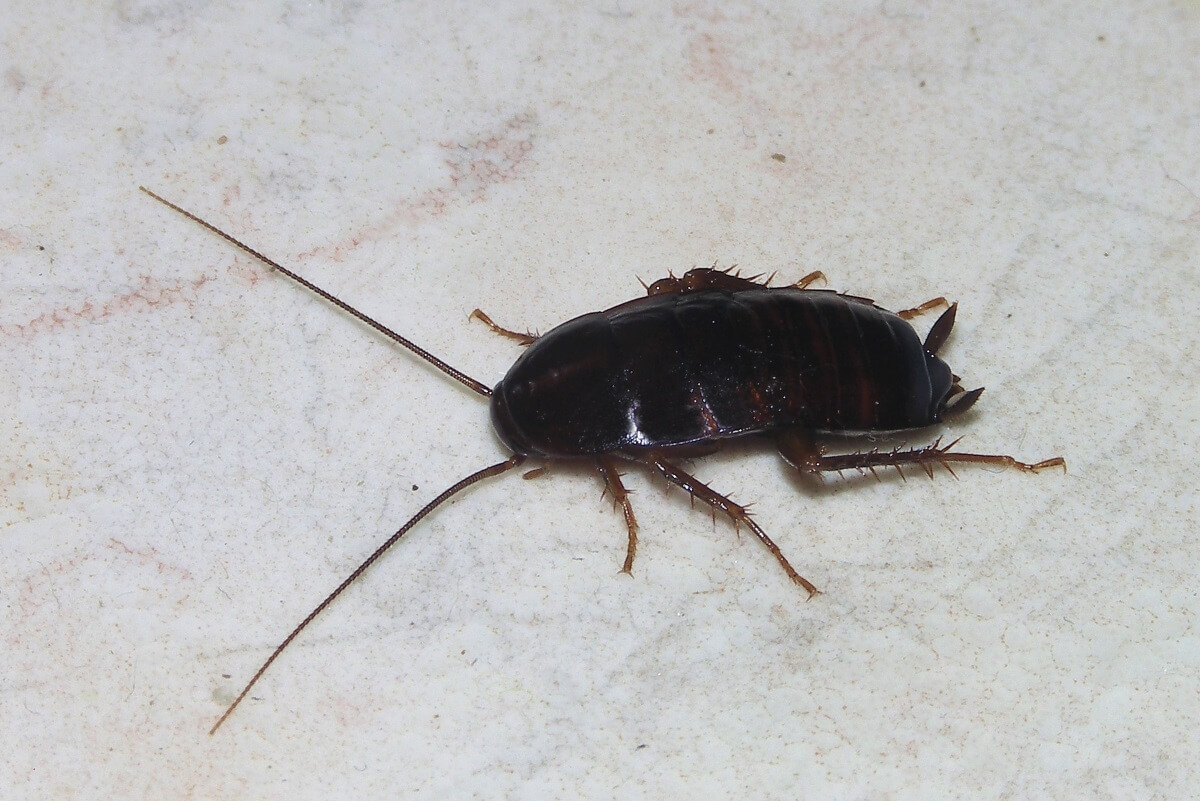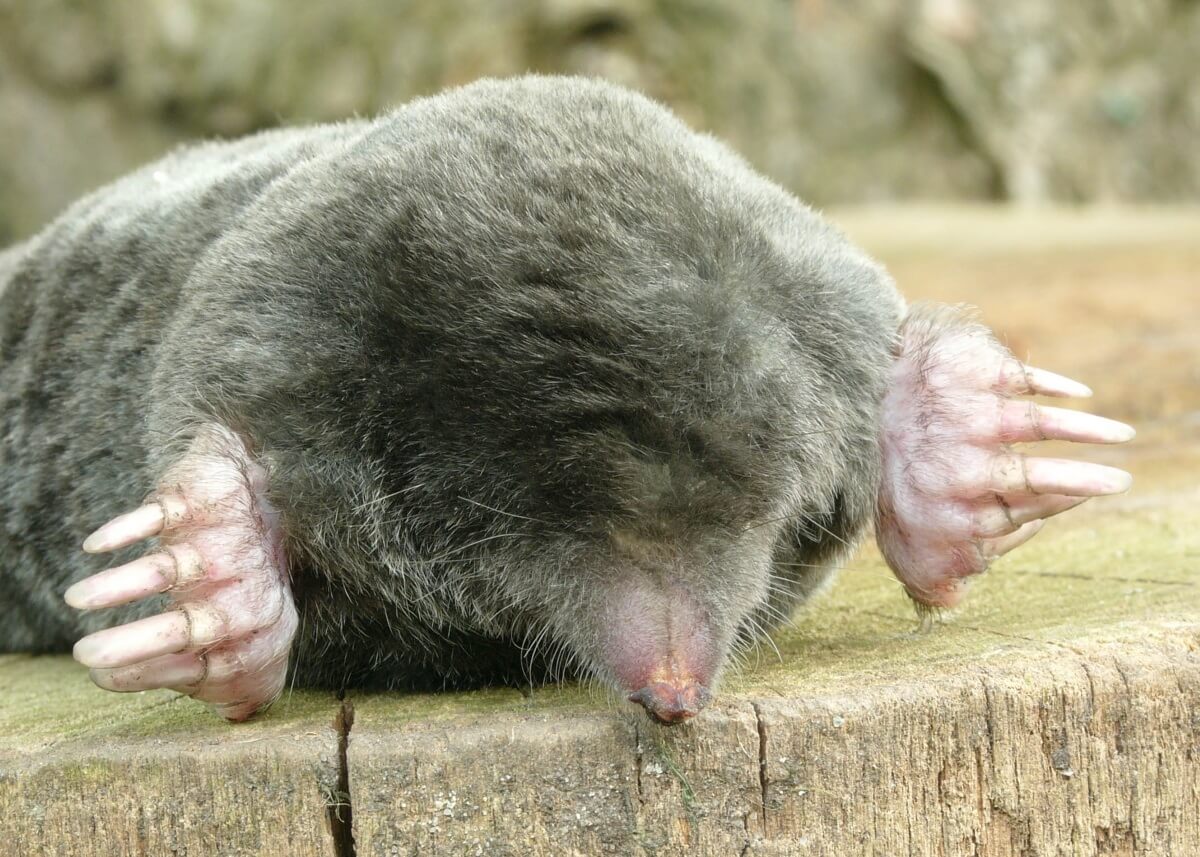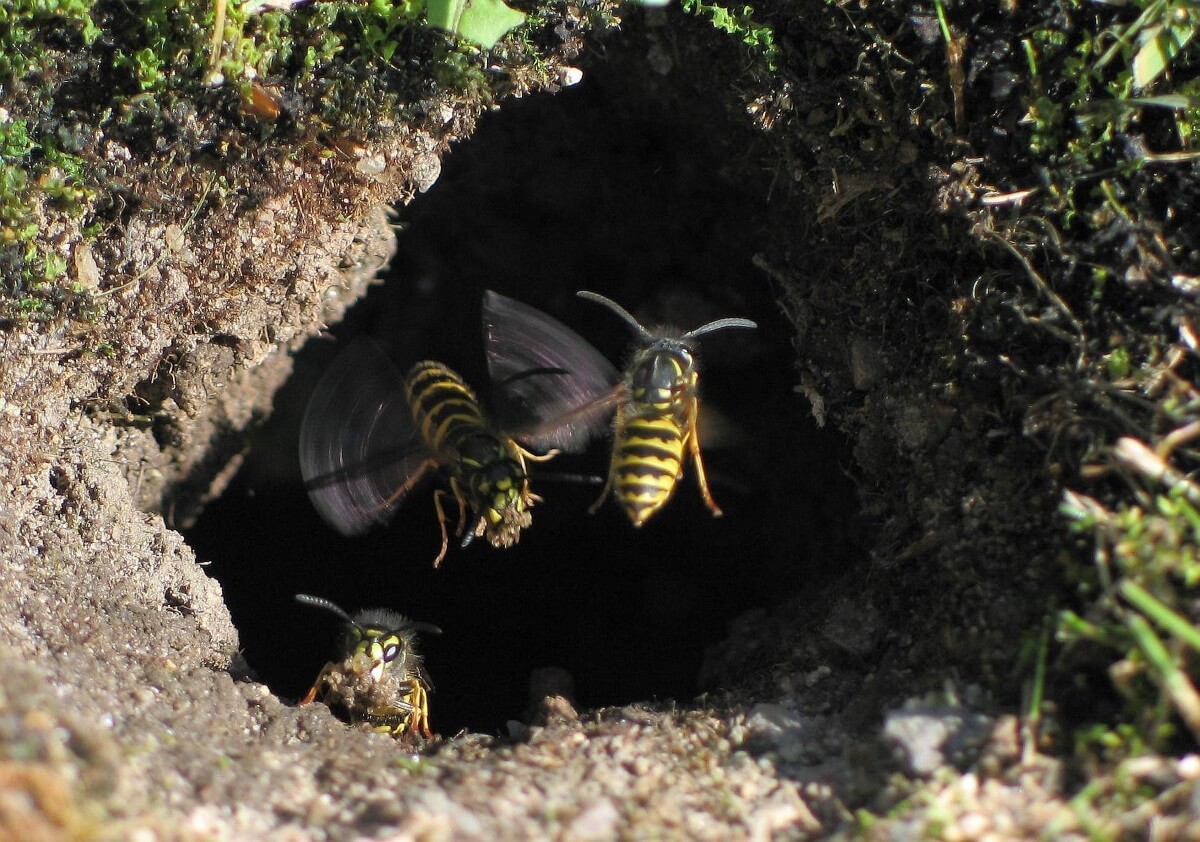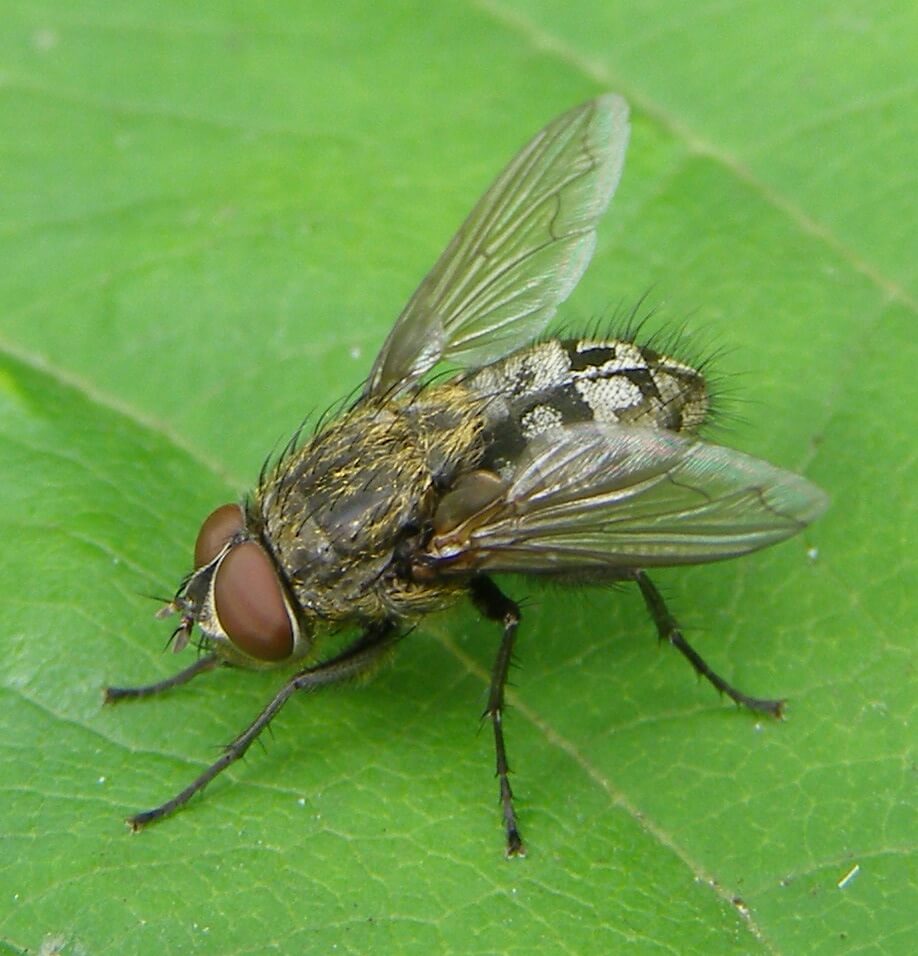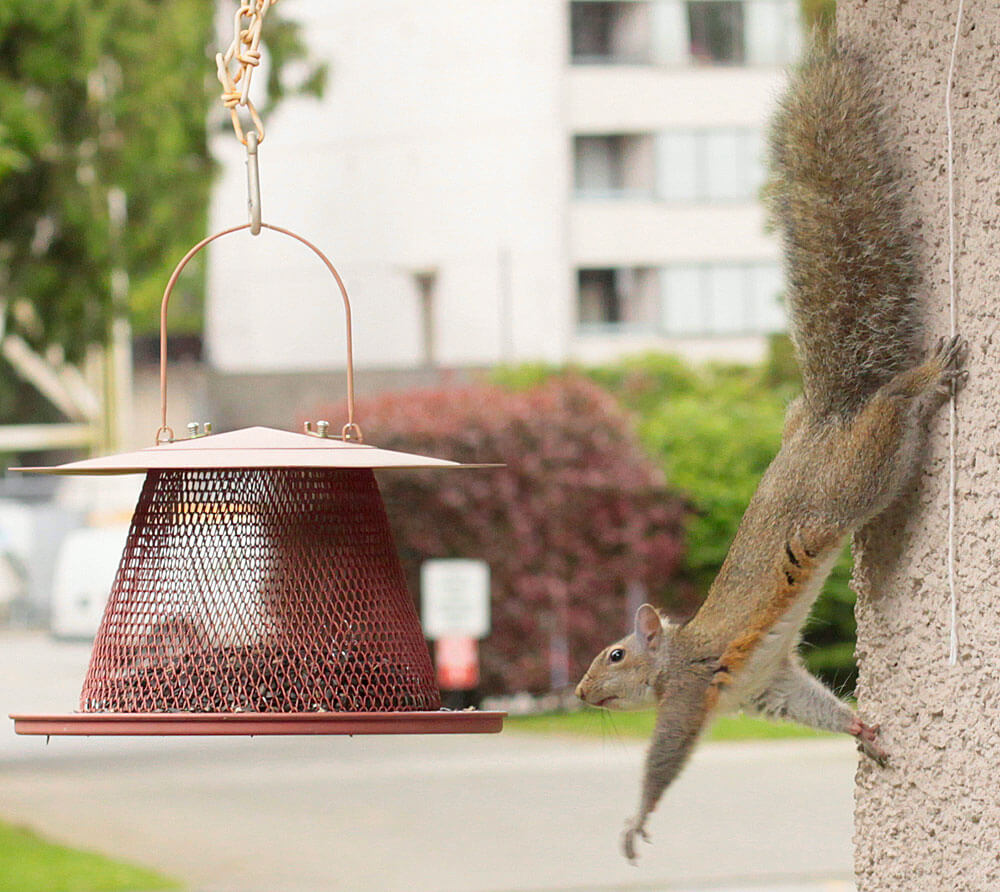Grey Squirrel Pest Bio
Description
As the name suggests, the eastern grey squirrel has predominantly grey fur, but it can have a brownish color. It has a usual white underside as compared to the typical brownish-orange underside of the fox squirrel. It has a large bushy tail. Particularly in urban situations where the risk of predation is reduced, both white- and black-colored individuals are quite often found. The melanistic form, which is almost entirely black, is predominant in certain populations and in certain geographic areas, such as in large parts of southeastern Canada. Genetic variations within these include individuals with black tails and black-coloured squirrels with white tails. (See Tree squirrel for more information on these colour variations.)
The head and body length is from 23 to 30 cm (9.1 to 11.8 in), the tail from 19 to 25 cm (7.5 to 9.8 in) and the adult weight varies between 400 and 600 g (14 and 21 oz).
The tracks of an eastern grey squirrel are difficult to distinguish from the related fox squirrel and Abert's squirrel, though the latter's range is almost entirely different from the grey's. Like all squirrels, the eastern grey shows four fingers on the front feet and five on the hind feet. The hind foot-pad is often not visible in the track. When bounding or moving at speed, the front foot tracks will be behind the hind foot tracks. The bounding stride can be two to three feet long.
Behaviour
Like many members of the family Sciuridae, the eastern grey squirrel is a scatter-hoarder; it hoards food in numerous small caches for later recovery. Some caches are quite temporary, especially those made near the site of a sudden abundance of food which can be retrieved within hours or days for reburial in a more secure site. Others are more permanent and are not retrieved until months later. Each squirrel is estimated to make several thousand caches each season. The squirrels have very accurate spatial memory for the locations of these caches, and use distant and nearby landmarks to retrieve them. Smell is used once the squirrel is within a few inches of the cache.
Squirrels sometimes use deceptive behaviour to prevent other animals from retrieving cached food. They will pretend to bury the object if they feel that they are being watched. They do this by preparing the spot as usual, for instance digging a hole or widening a crack, miming the placement of the food, while actually concealing it in their mouths, and then covering up the "cache" as if they had deposited the object. They will also hide behind vegetation while burying food or hide it high up in trees (if their rival is non-arboreal). Such a complex repertoire suggests that the behaviors are not innate, and imply theory of mind thinking.
The eastern grey squirrel is one of very few mammalian species that can descend a tree head-first. It does this by turning its feet so the claws of its hind paws are backward pointing and can grip the tree bark.
Eastern grey squirrels build a type of nest, known as a "drey", in the forks of trees, consisting mainly of dry leaves and twigs. Males and females may share the same nest for short times during the breeding season and during cold winter spells squirrels may share a drey to stay warm. They may also nest in the attic or exterior walls of a house, where they may be regarded as pests, and as fire hazards due to their habit of gnawing on electrical cables. (See Tree squirrel for more on interactions with humans.) In addition, squirrels may inhabit a permanent tree den hollowed out in the trunk or a large branch of a tree.
Eastern grey squirrels are crepuscular, or more active during the early and late hours of the day, and tend to avoid the heat in the middle of a summer day. They do not hibernate.
Reproduction
Eastern grey squirrels can breed twice a year, but younger and less experienced mothers will normally have a single litter per year in the spring. Depending on forage availability, older and more experienced females may breed again in summer. In a year of abundant mast crop 36% of females will bear two litters, but none will do so in a year of poor mast crop. Their breeding seasons are December to February and May to June, though this is slightly delayed in more northern latitudes. The first litter is born in February or March, the second in June or July, though, again, birthing may be advanced or delayed by a few weeks depending on climate, temperature and forage availability. In any given breeding season an average of 61 - 66% of females will bear young. If a female fails to conceive or loses her young to unusually cold weather or predation, she will re-enter estrus and have a later litter.
Normally, one to four young are born in each litter, but the largest possible litter size is eight. The gestation period is about 44 days. The young are weaned at around 10 weeks, though some may wean up to six weeks later in the wild. They begin to leave the nest after 12 weeks, with autumn born young often wintering with their mother. Only one in four squirrel kits will survive to one year of age, with mortality of around 55% for the following year. Mortality rates then decrease to around 30% for following years until they increase sharply at eight years of age.
Eastern grey females can rarely enter estrus as early as five and a half months old, but females are not normally fertile before at least one year of age. Their mean age of first estrus is 1.25 years. Male Eastern Greys are sexually mature between one and two years of age. These squirrels can live to be 20 years old in captivity, but in the wild live much shorter lives due to predation and the challenges of their habitat.
Diet
Eastern grey squirrels eat a range of foods, such as tree bark, tree buds, berries, many types of seeds and acorns, walnuts, and other nuts, and some types of fungi found in the forests, including fly agaric mushrooms (Amanita muscaria). They can cause damage by tearing the tree bark and eating the soft cambial tissue underneath. In Europe, sycamore (Acer pseudoplatanus) L. and beech (Fagus sylvatica L.) suffer the greatest damage.
Eastern grey squirrels have a high enough tolerance for humans to inhabit residential neighbourhoods and will raid bird feeders for millet, corn, and sunflower seeds. They will also raid gardens for tomatoes, corn, strawberries, and other garden crops. On very rare occasions, when their usual food sources are scarce, eastern grey squirrels will also prey upon insects, frogs, small rodents including other squirrels, and small birds, their eggs and young. They will also gnaw on bones, antlers, and turtle shells – likely as a source of minerals sparse in their normal diet.
Habitat
In the wild, eastern grey squirrels can be found inhabiting large areas of mature, dense woodland ecosystems, generally covering 100 acres (40 hectares) of land. These forests usually contain large amounts of dense understory vegetation that provides them sufficient amount of food sources and favourable shelters. Oak-hickory hardwood forests are preferred over coniferous forests.
Eastern grey squirrels generally prefer constructing their dens upon large tree branches and within the hollow trunks of trees. They also have been known to take shelter within abandoned bird nests. The dens are usually lined with moss plants, thistledown, dried grass, and feathers. These perhaps provide and assist in the insulation of the den, used to reduce heat loss. A cover to the den is usually built afterwards.
Close to human settlements, eastern grey squirrels are found in parks and back yards of houses within urban environments and in the farmlands of rural environments.
| Grey Squirrel Pest - bio | |
| Pest Temperament | Non Aggressive |
| Pest Body Length | 23 to 30 cm (9.1 to 11.8 in) |
| Pest Tail Length | 19 to 25 cm (7.5 to 9.8 in) |
| Pest Adult Weight | Weight Varies Between 400 and 600 g (14 and 21 oz) |
| Pest Mean Life Expectancy (at birth) | 1-2 years |
| Pest Average Life Span (an adult) | 6 years |
| Pest Maximum Recorded Life Span (in the wild) | 12 years |
| Pest Maximum Recorded Life Span (residential) | 20 years |
| Pest Litter Size | 2 to 4 per Litter |
| Pest Litter Frequency | 2 per Annual |
| Pest Special Ability | Found in Nearly Every Habitat on Earth |

